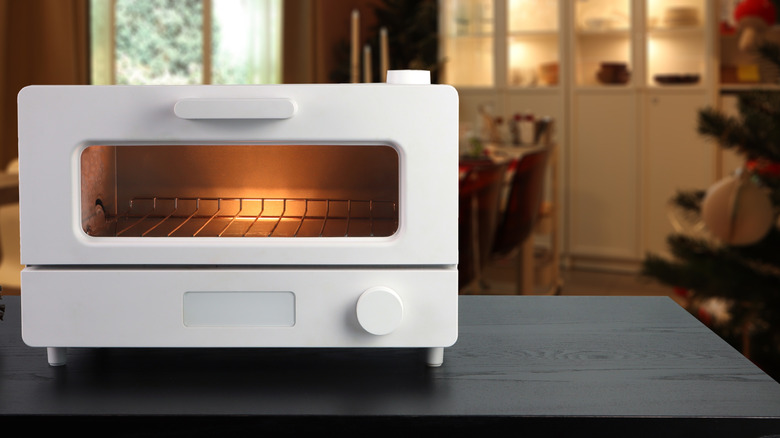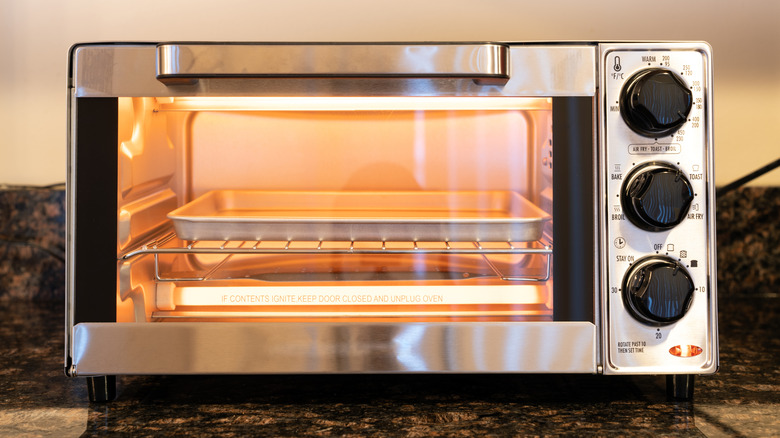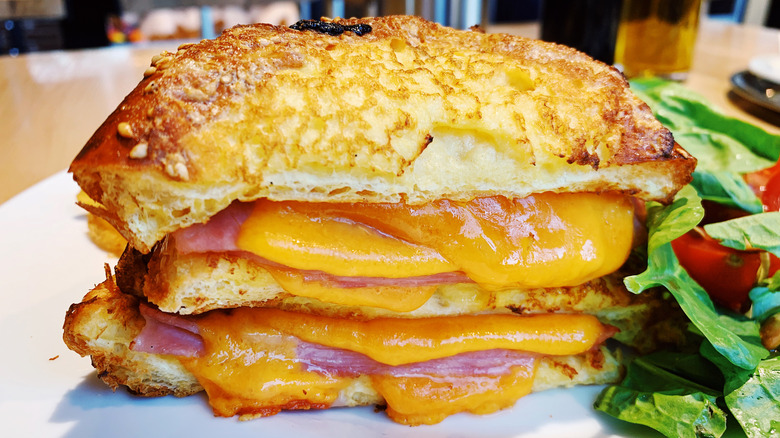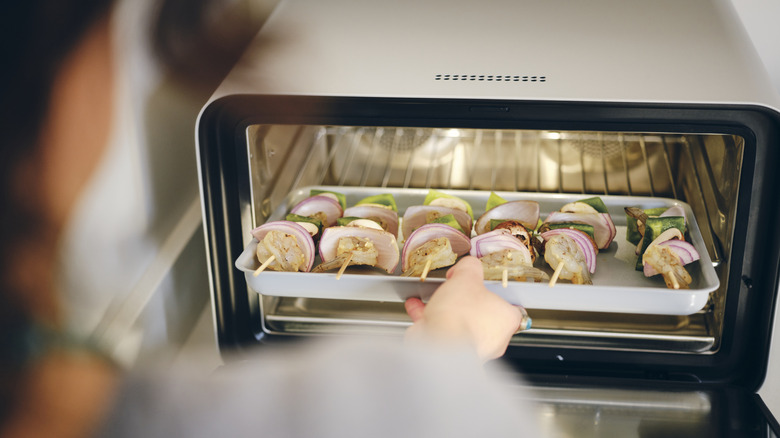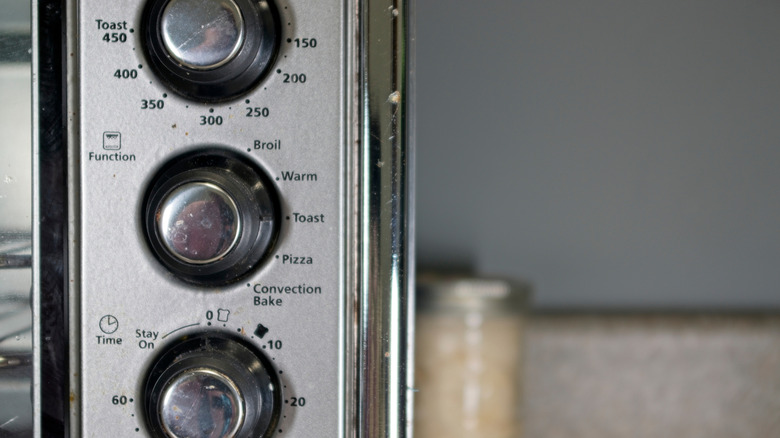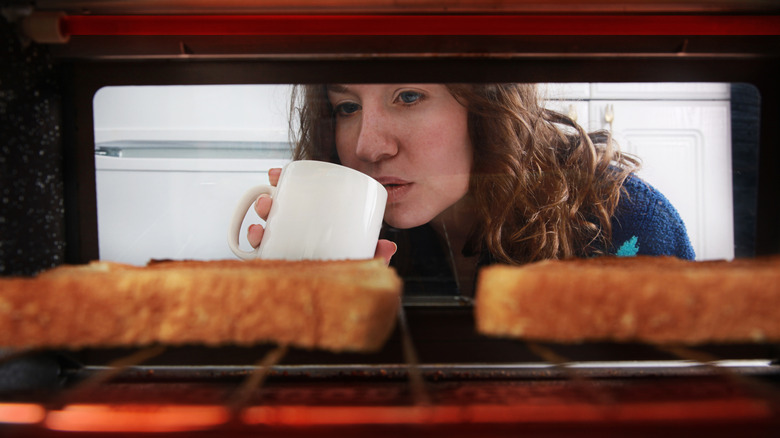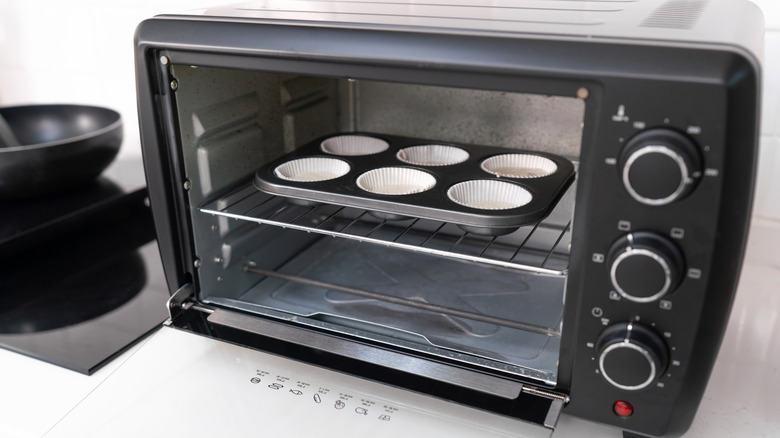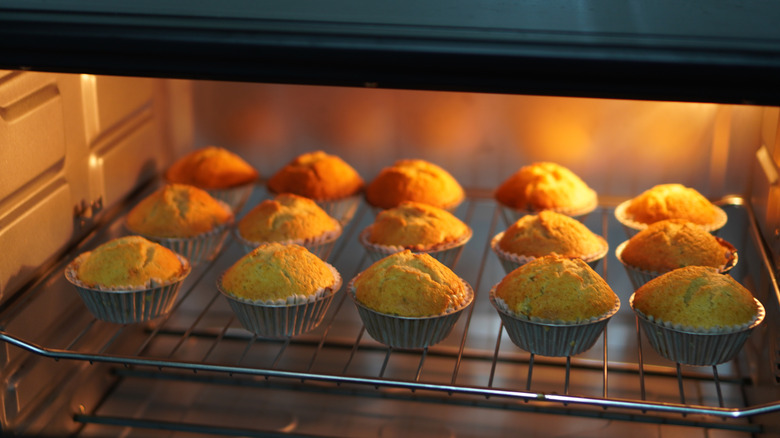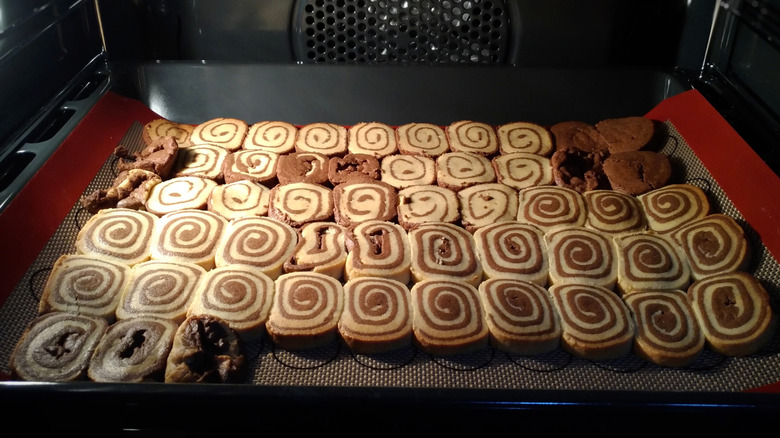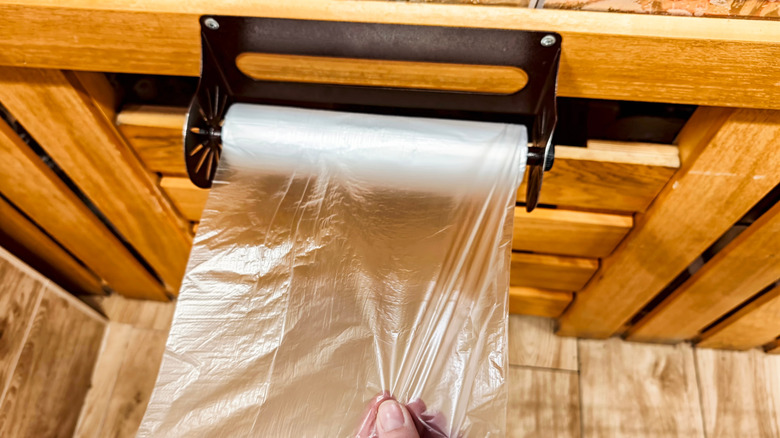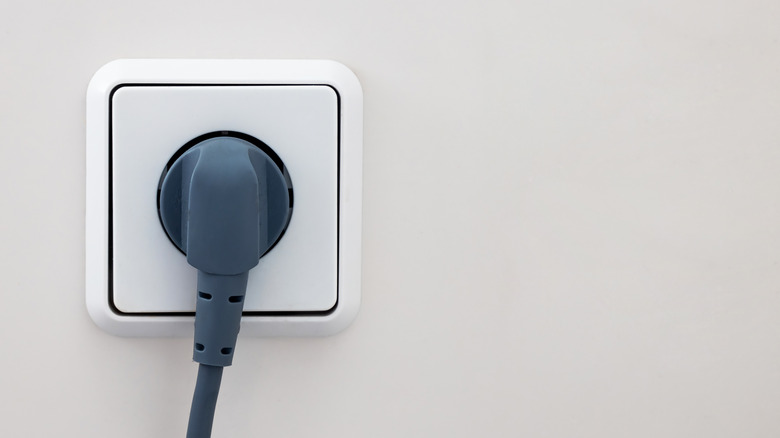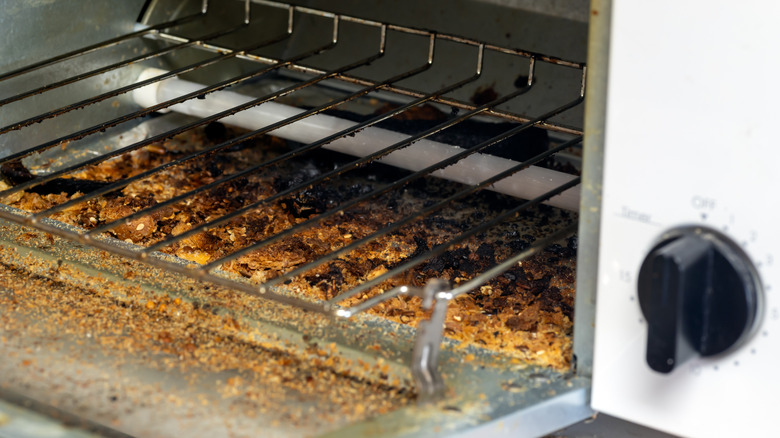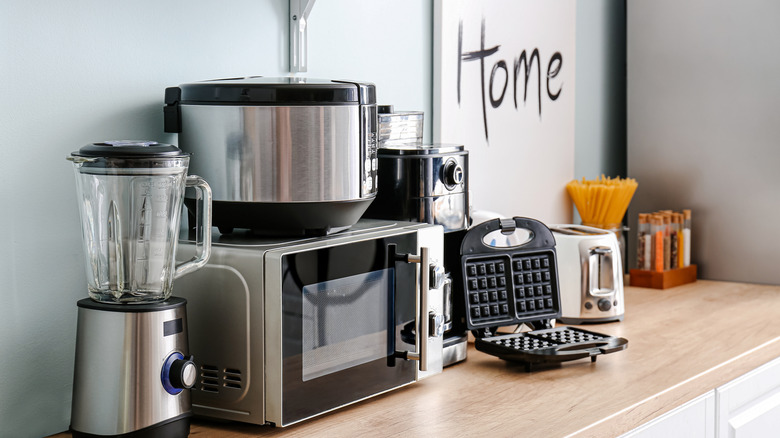12 Biggest Mistakes People Make When Using A Toaster Oven
Merging the functions of a toaster and an oven, toaster ovens are compact kitchen appliances used to toast, broil, and bake. Unlike traditional ovens, toaster ovens take up little space in the kitchen, making them ideal for small apartments and dorms. Toaster ovens are also more versatile than standard toasters since they can be used to reheat leftovers, bake savory casserole recipes, and even roast small chickens.
Given that toaster ovens are essentially mini versions of conventional ovens, most of the same cooking rules apply to both gadgets. That said, because they are more compact, toaster ovens come with their own advantages and disadvantages. For instance, they heat up faster and use less energy, but they also require more careful monitoring. Because food sits closer to the heating elements, even small variations in timing or rack placement can affect the final result.
Ready to find out how to avoid some of the biggest mistakes home chefs make when using a toaster oven? We are here to walk you through the dos and don'ts to ensure that your next toaster oven meal is a complete success.
Failing to preheat the toaster oven
Just like full-sized ovens should be preheated before use, so should toaster ovens. While your meal will probably still be edible if you skip this step, placing food directly in a hot oven can go a long way toward giving it the right texture and flavor. Given that most recipes specify the temperature and cooking time, placing food in a cold toaster oven is likely to throw off the results, leading to uneven cooking.
Perhaps one Reddit user explains this best, saying, "If you don't preheat, the heating elements at the top of the stove will be going full blast when you first put in your food, and because they're so close to the food, the top will be overly browned or blackened by the time your meal is done. Preheat it for just a few minutes, and then the elements only need to come on periodically to keep it up to temp, and your food won't crisp too much."
The great news is that toaster ovens preheat 30% to 50% faster than standard full-sized ovens. This not only saves time but also electricity. For best results, set the toaster oven on the temperature specified in the recipe and place the food in the appliance once it's sufficiently hot. This is also the moment you should set the timer to ensure that the dish doesn't overcook or undercook.
Using the toaster oven to cook the wrong types of food
The toaster oven is a handy kitchen tool, provided that you stick to cooking foods suited to the compact appliance. Since the heating elements in a toaster oven sit very closely to the cooking racks, using it to prepare certain types of foods can lead to less than appetizing results or could even damage the appliance or start a fire.
Toaster ovens aren't ideal for fatty foods because the grease may drip onto the heating elements at the bottom of the appliance, creating a fire hazard. The same goes for heating up liquids or soups, which can also spill onto the heating elements. Another food to avoid preparing in a toaster oven is uncooked pasta or rice, since both need boiling water rather than dry heat to cook.
Given that toaster ovens are relatively small, they can have areas that run hotter than others. As a result, small foods like seeds and nuts can burn quickly in the uneven heat. Finally, baked goods such as pastries, croissants, and brown butter cinnamon rolls are tricky to reheat in toaster ovens, as the inconsistent heat can dry them out.
Not using the right bakeware in the toaster oven
Just like some containers are not suitable for the microwave or regular oven, others can't handle the direct heat of a toaster oven. After all, the compact size of the appliance means that its heating elements are relatively close to whatever is placed inside it. That said, most toaster ovens come with a multifunctional cooking tray or sheet pan, which can be used for toasting bread, roasting boneless, skinless chicken breasts, and everything in between.
When cooking in a toaster oven, it's important to exercise extra caution with glass and ceramic bakeware unless it's been labeled "broiler safe" because it may splinter or shatter. Even glass and ceramic bakeware marked as "oven safe" might not withstand the close-range heat of a toaster oven. Instead, it's best to opt for light-colored silicone, steel, or aluminum pans since they generally cook more evenly in a toaster oven than their darker counterparts, which can burn food by transferring heat too quickly.
Using the wrong settings
Modern toaster ovens feature a range of settings. While it may be tempting to stick to familiar options, cooks aren't doing themselves any favors by not using the appliance's full range of functions. Aside from its three basic settings — toasting, baking, and broiling — many toaster ovens also feature more niche options. These include preset functions for air frying, slow roasting, reheating leftovers, and keeping food warm. Some gadgets also offer specialized settings for specific foods such as pizza, cookies, and bagels.
When it comes to basic functions, the toast setting is mostly used for toasting bread — some toaster ovens also feature light, medium, and dark settings to allow more control over how golden the slices become. On the bake setting, most of the gadget's heat is produced by the bottom element, which is ideal for preparing cookies, casseroles, and reheating leftovers. Finally, the broil utilizes the top heating element to mimic a grill, making it ideal for roasting vegetables and melting cheese on nachos.
Ignoring the oven's convection settings
Many mid- to high-end toaster ovens include a convection feature. Unlike standard toaster ovens, which only feature heating elements on the top and bottom of the appliance, convection models also come with a built-in fan to circulate hot air around the food. This, in turn, promotes more uniform cooking. Convection toaster ovens can even be used to air fry food, giving home chefs the opportunity to prepare treats such as crispy fries and chicken wings with minimal oil. In fact, many modern toaster ovens come with a range of specific convection settings, such as convection bake, convection roast, and air fry.
Whether you are cooking in a standard convection oven or a convection toaster oven, it's important to adjust the temperature for convection cooking. This is because convection ovens reach higher temperatures and cook faster than regular ovens. As such, it's important to tweak recipes designed for traditional ovens. A common practice is to reduce the temperature listed in the recipe by 25 degrees, or cut the recommended cooking time by about a quarter.
Using the wrong rack position
Given that toaster ovens usually have heating elements at the top and bottom, rack positioning can mean the difference between a perfectly cooked meal and a complete disappointment. In fact, the placement of your dish inside the oven can have a huge influence on its overall flavor and texture. The gadget's compact size makes rack placement even more critical — and sometimes trickier — than in a full-sized oven.
Most toaster ovens come with either two or three rack position options. The top rack is closest to the gadget's top heating element, making it ideal for toasting bread, crisping leftovers, and broiling thin cuts of meat that need quick, high heat. The middle or lower rack if your oven only has two levels, is designed for making casseroles, baking brownies and cake-like banana bread, and roasting vegetables. Finally, the lowest rack, which sits closest to the bottom heating element, can be used for making flaky, buttery pie crusts and roasting large cuts of meat that require space and steady heat.
Forgetting to rotate pans during baking
While rotating pans halfway through baking is recommended when preparing cakes and pastries in a conventional oven, it's absolutely essential in toaster ovens. Since toaster ovens are more compact than their traditional counterparts, the small distance between the pan and the heating elements can cause one side of the dish to brown or crisp faster than the other.
This issue is compounded by the way toaster ovens distribute heat. The positioning of the heating elements in the cooking chamber often creates hot spots, which can lead to uneven baking and browning. In addition, baking multiple dishes simultaneously can impede air circulation in the toaster oven, making things even worse. Luckily, something as simple as rotating pans 180 degrees halfway through baking can go a long way toward making the heat more uniform.
Perfecting the rotation technique can take a little trial and error, as highlighted by one Reddit user. "I do it ¾ way through baking if it's a cake, because often they're not set enough and rotating them earlier will deflate them," they shared. "I do it halfway for cookies, because a big baking sheet does seem to impede air circulation a bit. [...] I have perfected my technique of turning things quickly. If you stand there with the oven door open while you're looking for the second oven mitt, you can lose 75 degrees Fahrenheit or more in a hurry," they say.
Cooking too much food at once
While it's easy to think that cooking multiple items at once might save time, especially when preparing food for a large group of people, this approach can easily backfire. Given that toaster ovens are already relatively compact compared to standard ovens, the last thing you want to do is cram them with too much food. An overcrowded toaster oven is unlikely to cook food evenly, leaving you with burnt edges and raw centers.
Placing too much food in a toaster oven simultaneously can impede air circulation, making it nearly impossible for heat to distribute evenly around the food. This, in turn, is likely to result in overcooking or undercooking. Even toasting too many slices of bread at once can prevent them from browning evenly or even result in a fire if they overlap. In addition, cramming too much food into a compact space can trap steam, making the end result soggy rather than crispy.
Lining the oven with paper towels or plastic wrap
As a rule of thumb, anything that doesn't belong in a traditional oven probably shouldn't end up in a toaster oven. This applies not only to containers that aren't oven-safe but also to materials used to line or cover trays. These include paper towels and cardboard, which are flammable materials that could ignite in the oven's chamber. Placing plastic wrap in a toaster oven is also a no-go. Common cling wrap has a low melting point between 220 and 250 degrees Fahrenheit, which means that it melts and releases harmful chemicals when exposed to high temperatures.
While aluminum foil can be used in a toaster oven, this has to be done with caution. Improperly placed foil can damage the appliance or even create a fire hazard. Aluminum foil can be used to line baking trays to catch any drips and simplify clean-up. The foil can also be used to cover or wrap food to prevent it from drying out or getting overly brown during the cooking process. On the other hand, covering the entire tray or rack with aluminum can impede airflow, leading to uneven cooking and overheating. In addition, never let the foil touch the gadget's heating elements or walls, as this can block ventilation and even create sparks or fire.
Leaving the toaster oven unattended or plugged in when not in use
Even though toaster ovens have greatly improved over the years, they can still be a safety hazard if not used in the right way. And it's not difficult to see why: An appliance that can reach 500 degrees Fahrenheit is no joke. This is precisely why you should never let a toaster oven run unsupervised while cooking. According to tests conducted by Tom's Guide, the surface of a toaster oven glass door can reach temperatures as high as 278 degrees Fahrenheit, creating a serious burn hazard. This is something to keep in mind, especially for households with children or pets.
Toaster ovens that are overloaded with food or have had their vents accidentally blocked can overheat and even lead to a fire. Similarly, an electrical fault in the wiring or plug can cause the unit to malfunction, spark, and ignite. This is why it's important to always keep an eye on the appliance while it's running, and unplug it from the power outlet when it's not in use.
Not cleaning crumb trays and failing to check for grease buildup
Just like microwaves and regular ovens, toaster ovens can accumulate food residue, particularly if used on a regular basis. Old crumbs and grease can affect the appliance's performance by blocking its ventilation system. They can also create smoke and unpleasant odors that can affect the flavor of your food. In the worst case scenario, leftover food debris can even start to smolder and smoke, creating a fire hazard.
To clean a toaster oven, start by unplugging it and wiping the exterior, including the control panel, with a damp towel or sponge. Next, take out any removable parts, such as racks and crumb trays, and scrub them separately. To get rid of burnt-on residue, soak them in the sink with warm, soapy water. Finally, use a damp sponge or cloth to clean the inside of the gadget. Avoid touching the heating elements, as doing so can damage them. In addition, never clean the toaster oven with metal scouring pads, as they can damage the coating on the appliance and leave behind sharp fragments inside the chamber that can cause dangerous sparks during the next cooking session.
Placing the toaster oven too close to walls and storing things on top of it
There is no question that toaster ovens get very hot during the cooking process. This is precisely why they require sufficient space around them to allow proper ventilation. As such, it's crucial to place the appliance at least four inches away from walls. It's also important to keep the same distance between the toaster oven and any cabinets above it. In addition, always place the appliance on a flat, hard surface rather than a cloth or towel, since these are flammable.
Similarly, never keep items on top of a toaster oven, no matter how limited your kitchen countertop space may be. Even though it may be tempting to stack pots, pans, or even a rice cooker on top of the appliance, the heat generated by a toaster oven can easily ruin them. Not only that, but it can also start a fire if the items placed on top of the gadget are flammable.
